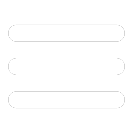FAQ
What does the planned concept mean for you, the city and the region? Here you will find answers to the most important questions, bundled in the FAQ (frequently asked questions) we have compiled for you.
Please note that the project is still in the concept phase. Even though these FAQs are continuously updated, there may be deviations and changes regarding the project at any time until the planning phase is completed. Especially with regard to the construction and operation phase, only a forecast can be made at the moment.
Dialogue-related questions
1 Who is the dialogue platform aimed at?
The Beirut PortCity Dialogue is open to all who have a common interest in the sustainable reconstruction of the port of Beirut and the destroyed neighbourhood.
Whether expert, politician, businessman, university member, or resident of the city and the country - we welcome any contribution that follows the motto of finding feasible and sustainable solutions for the city and its people together.
2. How do you plan the dialogue?
We are currently asking everyone connected with the port and the neighbouring urban areas for their opinion.
The central platform for the visibility of the project activities and the feedback is the
Beirut PortCity Dialogue website. Here, the analysis, background information, and feedback are available for everyone to see. If you would like to submit your views in writing, you can send them to response@beirut-portcity.org with the subject "Response."
Share your view: We would like to hear from you on how the reconstruction of the port of Beirut and the neighbouring cities should be done. Due to the pandemic, we are currently refraining from holding physical events. Alternatively, we will offer
virtual public viewing events at various times. The dates will be announced under the heading "Events" via social media channels as well as via the "Dialog News." You are welcome to subscribe to the “Dialog News” to stay up to date.
In addition, we would like to discuss basic issues of urban and port development in
workshops with Lebanese architects, engineers, environmental specialists, planners, and representatives of the maritime community. Further details on these meetings will be announced under “Events.” Participation is by invitation only.
If you have a professional background in any of the above areas and would like to get actively involved, please feel free to contact us. Please send an email with the subject "Workshop" to
response@beirut-portcity.org.
3 How long will the dialogue last?
The PortCity Dialogue is an engagement to involve all those with an interest in rebuilding the port and the surrounding areas of the city of Beirut to ensure a prospering and sustainable future. The initial phase of the dialogue will be completed by the end of 2021.
4 How can I become involved?
If you would like to be involved, please send us your analysis by e-mail directly to
response@beirut-portcity.org.
You are welcome to attend the virtual public meetings. They will be announced under “Events”. If you subscribe to “Dialog News” we will send you a short note.
If you have a professional background as an architect or in port/infrastructure development, please send a message with the subject "Workshop" to
response@beirut-portcity.org.
5 In which languages can I participate?
The Beirut PortCity Dialogue webpage uses a multilingual translation solution. The following language selection is possible: English, Arabic, French, or German. You can choose your preferred language in the header navigation above the search box.
Email responses should be made in English or Arabic.
Meeting language in workshops is English.
Meeting language in public meetings is English with Arabic translation.
Project-related questions
6 What is the project about?
This project is based on a concept that not only rebuilds the port of Beirut but also envisages a modernisation and expansion of the port capacities and reconnects the city with the sea. Unused land will be used for social urban development, the returns of which finance the reconstruction of the entire affected area. The concept thus avoids new debt for Lebanon.
7 Why did the German consortium come up with the concept?
The explosion of August 4, 2020, has accelerated the downward spiral of the economic situation under the influence of migration, pandemic, and corruption, massively increasing the suffering of the people in Beirut and throughout Lebanon. Germany is committed to helping the people of Lebanon in this situation – with action.
So far, only initial emergency measures have been taken in the port of Beirut. Despite numerous international efforts, the company CombiLift from Bremen, Germany, has disposed of 59 hazardous goods containers - with a higher explosive force than the stockpiles detonated last year.
By exploring the possibilities for sustainable and future-oriented reconstruction, Germany has taken the first important step on a path of reconstruction that is open to European cooperation. One aim is to link the region more closely with Europe. Another most essential goal is to avoid the new indebtedness of Lebanon. It makes little sense to invest in expensive "handouts" that cannot offer the city and the country any prospects for growth. We intend to empower the Lebanese people to operate a highly modern, efficient, and sustainable port.
8 Who are the project members?
HPC Hamburg Port Consulting, as a leading international specialist in port and terminal development, supports ports, terminals, inland terminals, and rail terminals worldwide in developing and optimising their current operations, facilitating innovation, and opening up new business areas towards a more sustainable future.
HPC started and led an initial private initiative on possibilities and requirements for the development of a future port of Beirut. HPC’s focus was on the development of the regional market as well as intermodal alternatives, and future requirements for the successful establishment of a working compliant port, and concepts that would provide a cost-effective and sustainable port for the city of Beirut. The final recommended concept has found widescale international favour. This has led to the call and support to further explore the developed concept. HPC will lead the further initiative through interaction with local and international stakeholders to deliver a workable and feasible port alternative.
With over 18,000 employees in 68 countries, Colliers International is one of the world's leading service providers for commercial real estate as well as residential and commercial properties. Under the Colliers International brand, you can access the full range of services for property users, owners, developers, and investors - on a local, national, and international level. Recognising the needs and thus understanding the entrepreneurial motives behind the real estate decisions of our customers is at the heart of what we do as strategic advisors. This enables us to provide tailor-made services and supports you in making the most of your real estate. Your success is our goal.
Fraunhofer IMW worked as a research partner and has contributed the indirect profitability analysis to the project. This analysis explores the considerable direct, indirect, and secondary economic effects of the project. This consists of increased added value, higher employment rates and income, and additional earnings for public authorities through taxes and social security contributions. Furthermore, qualitative effects associated with the project were assessed.
9 Who is supporting the project?
The project is internationally recognised as an opportunity for a sustainable redevelopment of the harbour. A first list of private and non-governmental organisations can be found under the heading "Supporters". These organisations support the conceptual approach and / or actively co-create the dialogue.
If your organisation is interested in becoming actively involved, please send us an email with the subject "Supporter" to response@beirut-portcity.org.
10 Who is your local partner?
As the project is going into the next phase, we plan to open an office in Beirut, appointing a project manager who coordinates the project and collaborates with all local and international stakeholders from politics, business, academics, and NGOs from Beirut.
Until the appointment, we closely cooperate with the Lebanese German Business Council, and Orienthelfer as well as other initiatives and organisations that support the mission of this project to implement feasible and sustainable solutions for the rebuilding of the port of Beirut and its destroyed neighbourhood for the sake of the people of Beirut and Lebanon.
11 How are the approximately 50,000 workplaces created?
In the construction phase, an average of 4,000 workers will be employed on-site over a 15-year period. Occupation effects in supplier and subcontractor companies as well as increased consumption account for approx. 10,000 additional workplaces.
The utilization phase will provide up to 37,000 workplaces in the Quartier St. Michel, of which, in the base case on average, approx. 85% or approx. 32,000 workplaces will be manned from the 16th year onwards. These long-term workplaces will primarily be created in the labour-intensive service sector (offices, hotels, etc.). In addition, approx. 20,000 further workplaces could be created through indirect and secondary effects.
For more details, you are invited to read the analysis papers “Direct profitability” and “Indirect Profitability.”
12 How do the people of Beirut and Lebanon benefit from the project?
Based on the assumptions made, the indirect profitability of the Beirut PortCity project could add up to approx. USD 30 bn in the base case over a period of 25 years. Thus, public refunding through taxes and earnings from the development totals to approx. USD 6.4 bn, while social security funds would receive payments of approx. USD 5.6 bn.
In addition, qualitative effects provide further significant benefits for civil society. The impact of the project can enhance political and socio-economic stability by reducing unemployment and discontent in society and by offering long-term perspectives and possibilities to the people. Further integrating effects can result from social measures that will be financed through indirect profitability gains, such as strengthening low-income families, and combining working and living areas. Environmental and ecological sustainability criteria can also be included, and the new district may even become an initial point for a public transport system.
The project can also increase the attractiveness of Beirut and Lebanon as a gateway to the Middle East that attracts tourists, business travellers and investors from around the world. Through this lighthouse project, the image of the country can fundamentally change from a region of instability to one of economic prosperity.
13 How quickly can the project be implemented?
The next phase of the project has already started. We expect the first milestone results at the turn of 2021/2022. Parallel to the necessary further detailed studies, port operations continue and should be able to continue undisturbed even when the expansion measures are started.



